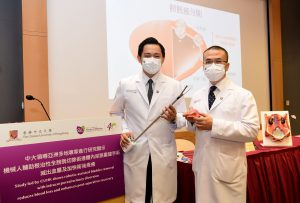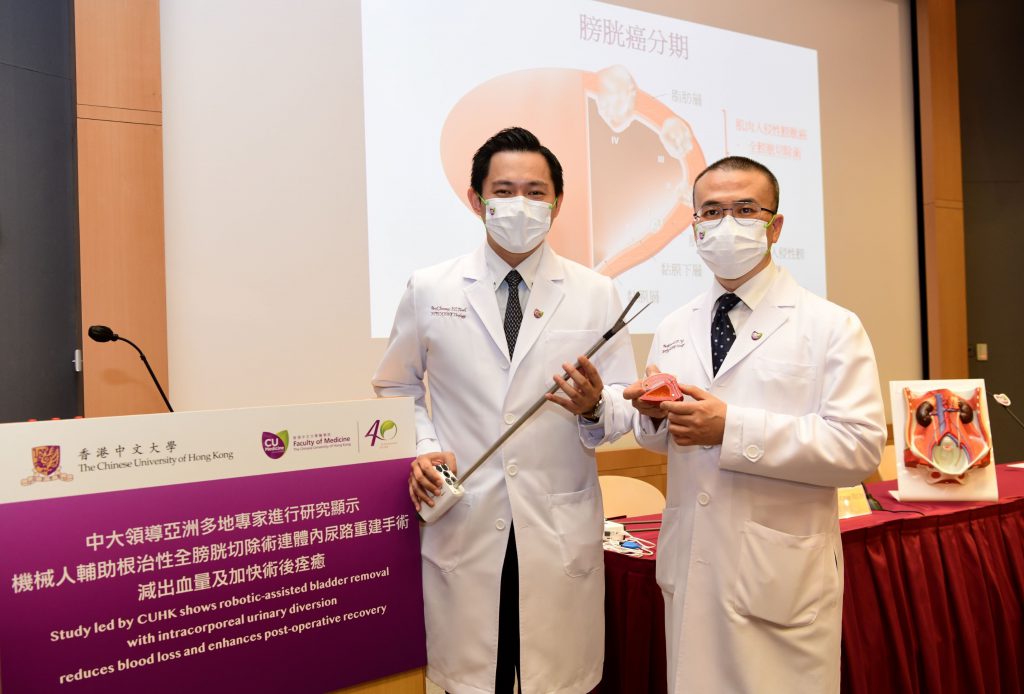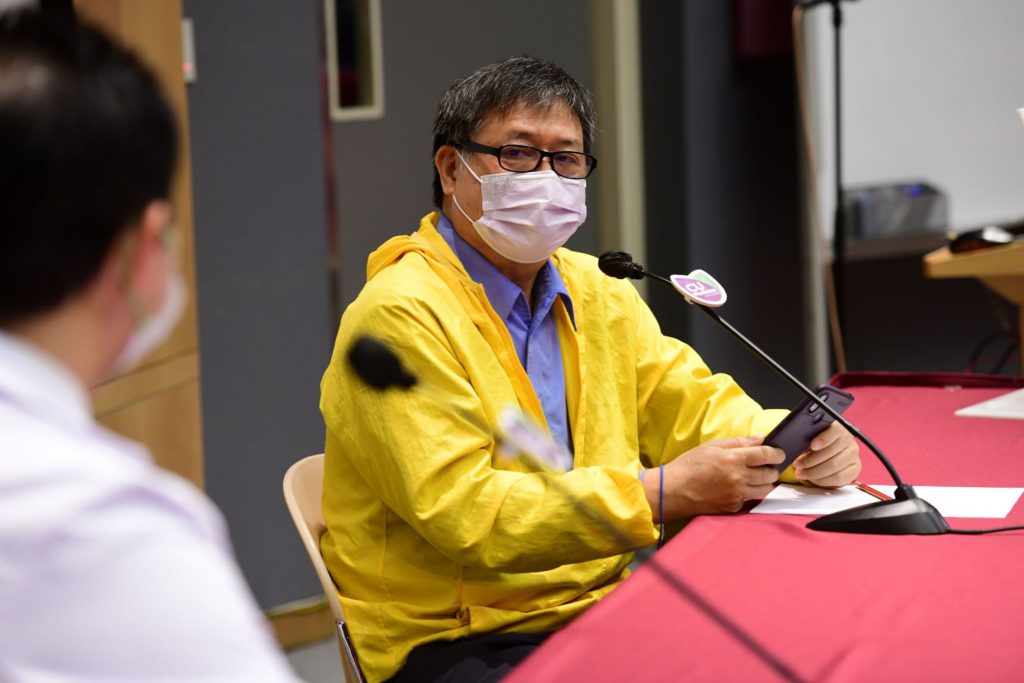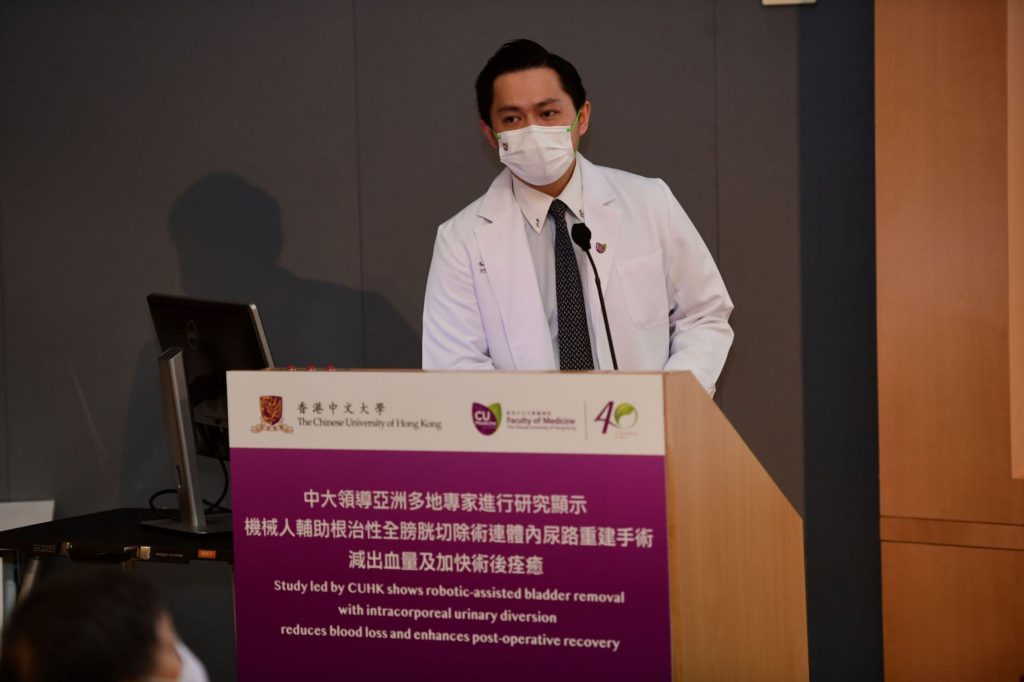CUHK
News Centre
Study led by CUHK shows robotic-assisted bladder removal with intracorporeal urinary diversion reduces blood loss and enhances post-operative recovery
Robotic-assisted radical cystectomy (RARC), the complete removal of the bladder with the use of surgical robots, has gained increasing acceptance worldwide. After the removal of the bladder, patients need to undergo a urinary diversion, such as the reconstruction of a “new bladder”. In the past, a urinary diversion had to be performed through an open approach, i.e. extracorporeal urinary diversion (ECUD). Recently, an intracorporeal urinary diversion (ICUD) approach has been introduced, and the whole procedure can be performed in a minimally invasive manner.
The Chinese University of Hong Kong’s (CUHK) Faculty of Medicine (CU Medicine) has led a study involving nine expert centres in Asia to understand the safety and feasibility of RARC with ICUD, in which ICUD is more complicated and technical than ECUD. Study results showed that ICUD reduced the volume of blood loss and the length of hospital stay by 22% and 12% respectively over ECUD. Meanwhile, the major complication rates were similar between the two study groups. These results have been published in the journal Annals of Surgical Oncology.
RARC with ICUD is regarded as one of the most challenging robotic-assisted surgeries in urology
Bladder cancer is the 11th most common cancer worldwide. Patients with localised muscle-invasive bladder cancer can be treated by RARC. In 2017, a number of Asian expert centres in bladder cancer, including centres in Japan, Korea, Thailand and mainland China, joined hands to form the Asian RARC Consortium. The aim of establishing this consortium is to develop an Asian RARC registry to learn more about the potential benefits and drawbacks of RARC.
Urinary diversion is a major step involved in RARC, and it can be done by reconstructing an ileal conduit or a neobladder. The former is performed by using a segment of the small intestine, which directs urine through a stoma into an external collection bag. The latter is performed by using a longer segment of the small intestine, which is then reconstructed into a reservoir to replace the original bladder, so patients can urinate as usual. Urinary diversion can be done in both an extracorporeal and intracorporeal approach.
Being the standard of care, ECUD is performed via an open approach and will lead to a wound of 15 to 20 cm as the part of the intestine used for diversion has to be taken out through the wound to perform the reconstruction outside the body. On the other hand, ICUD is performed with a minimally invasive approach as the whole procedure is completed within the abdominal cavity. Thus, ICUD requires higher skills than ECUD.
Professor Anthony Chi Fai NG, Professor from the Division of Urology, Department of Surgery at CU Medicine and Director of S.H. Ho Urology Centre at CUHK, stated, “Performing RARC with ICUD is regarded as one of the most challenging robotic-assisted surgeries in urology. A 30-case experience is generally needed to attain an acceptable level of proficiency. As this meticulous surgical approach may reduce the surgical trauma for patients undergoing RARC, there is a need to investigate the perioperative outcomes of ICUD when compared with ECUD.”
ICUD can reduce blood loss and the length of hospital stay
The Urology team at CU Medicine led the study which reviewed the data of 556 bladder cancer patients from the Asian RARC registry between 2007 and 2020. 55% of the patients had ICUD while 45% underwent ECUD. Comparison of the outcomes of the 2 groups showed that the blood loss of ICUD was 22% less than ECUD, while the length of hospital stay of ICUD was also 12% shorter than ECUD. Meanwhile, the major complication rates were similar among the 2 groups. Details are as follows:
|
|
ICUD group |
ECUD group |
|
Blood loss (mL) |
423 |
541 |
|
Length of hospital stay (days) |
16 |
18 |
|
Major complication rate (%) |
15 |
17 |
Dr. Jeremy Yuen Chun TEOH, Assistant Professor from the Division of Urology, Department of Surgery at CU Medicine, remarked, “Our study is impactful as it demonstrates that an intracorporeal approach for urinary diversion is equally safe and feasible as an extracorporeal one. It also generates additional benefits of less blood loss and shorter hospitalisation. We can say that RARC plus ICUD could potentially be the best possible minimally invasive approach in treating muscle-invasive bladder cancer.”

A study led by CU Medicine shows that robotic-assisted bladder removal with intracorporeal urinary diversion reduces the volume of blood loss and the length of hospital stay by 22% and 12% respectively. (From left) Dr. Jeremy TEOH, Assistant Professor from the Division of Urology, Department of Surgery at CU Medicine, and Professor Anthony NG, Professor from the Division of Urology, Department of Surgery at CU Medicine and Director of S.H. Ho Urology Centre at CUHK.








